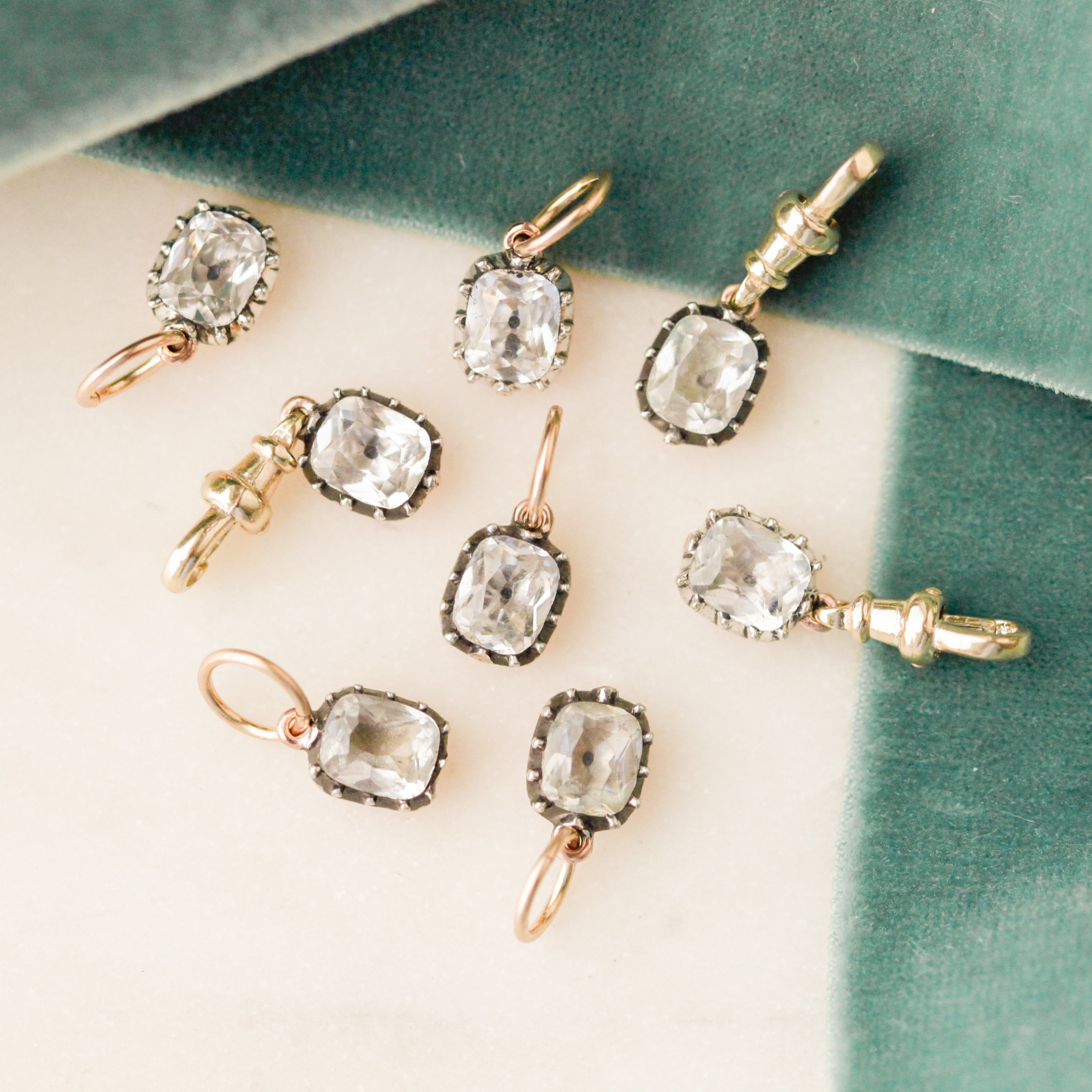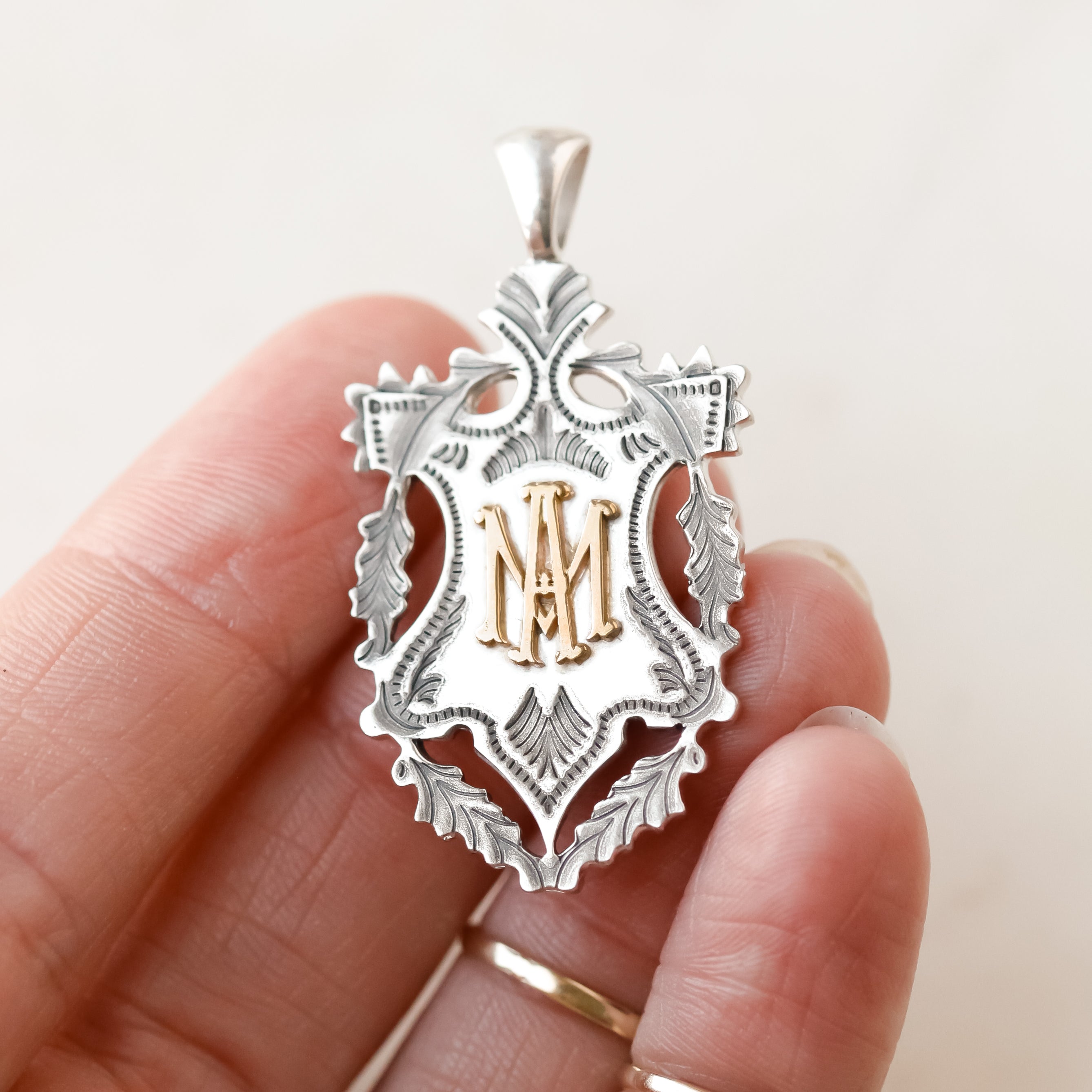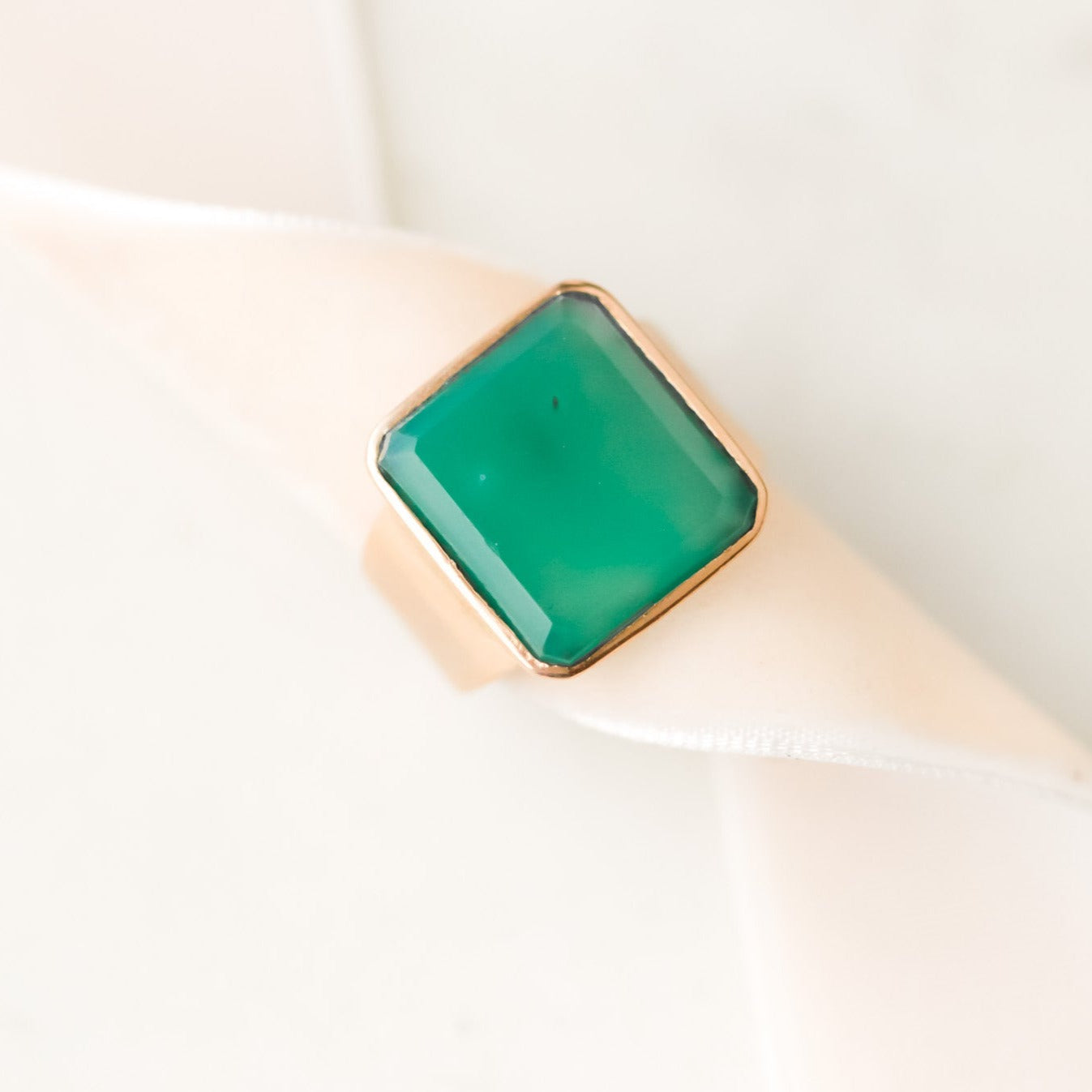
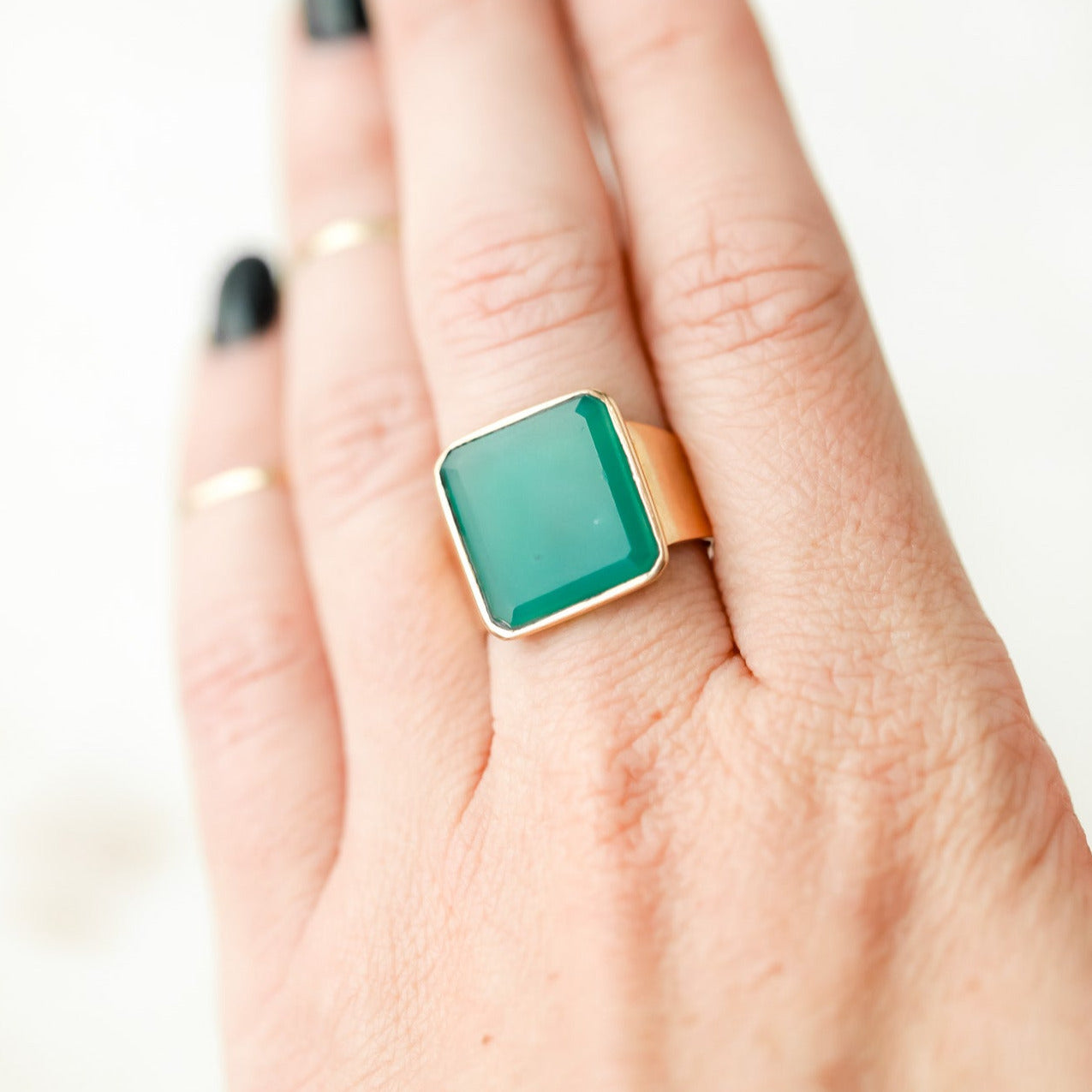
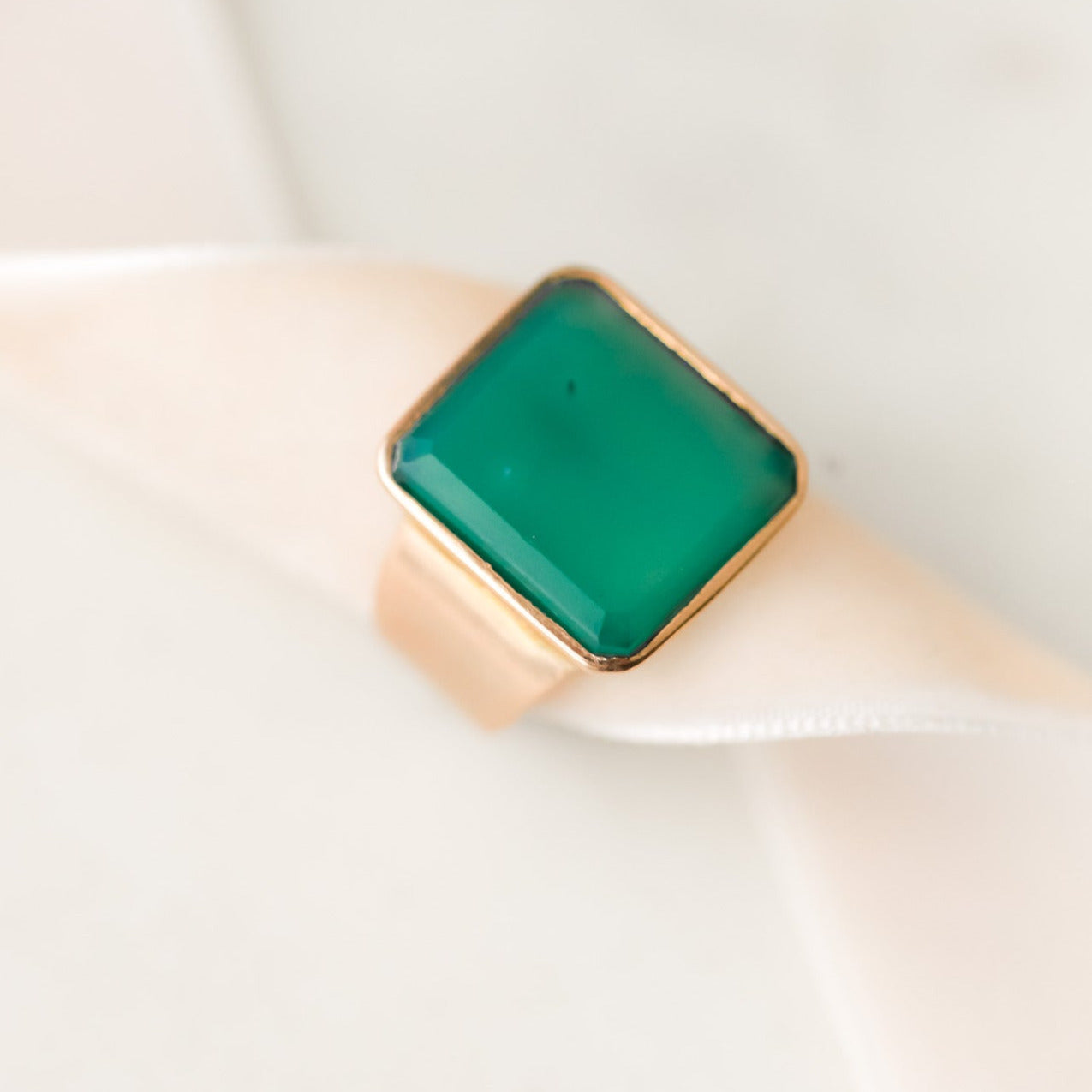
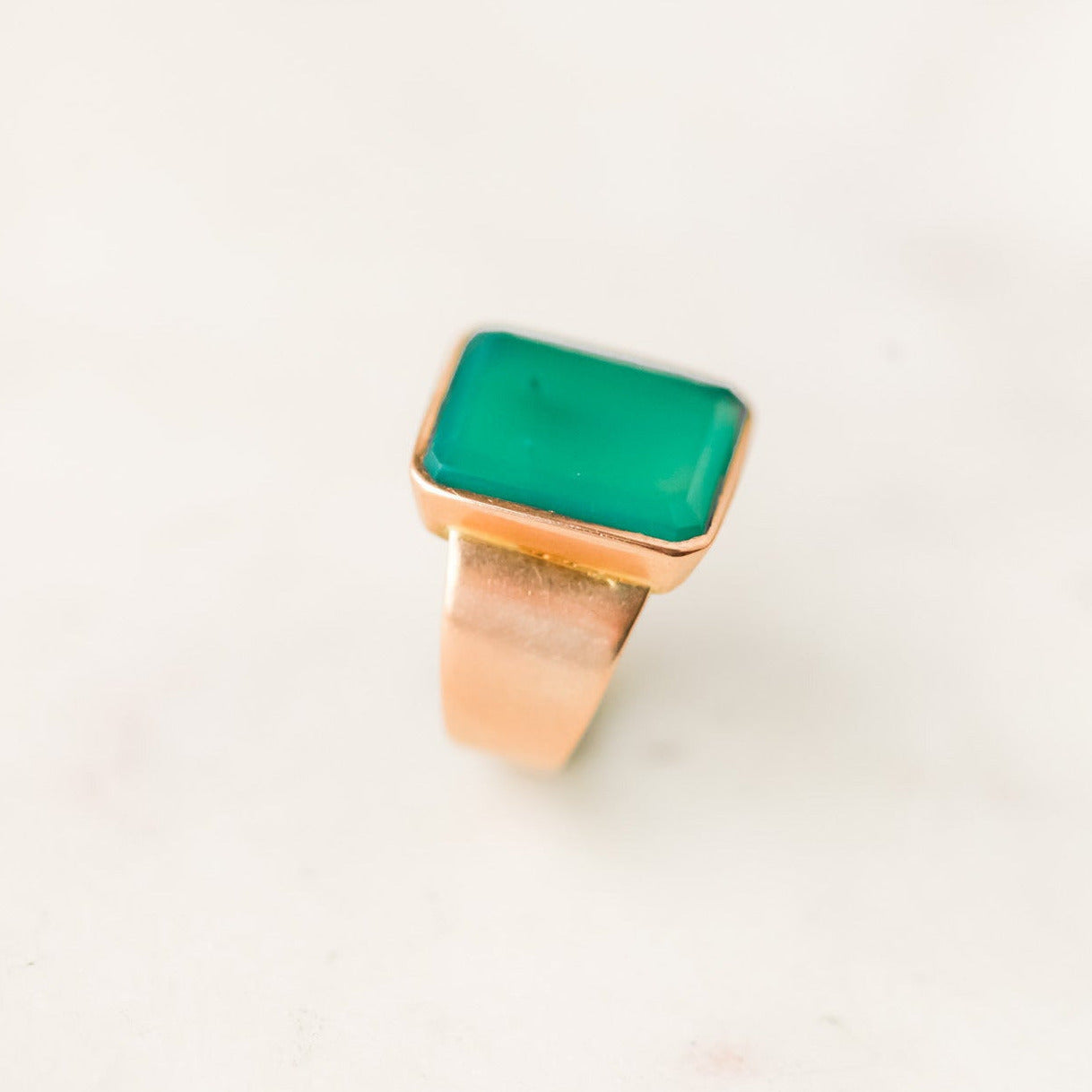
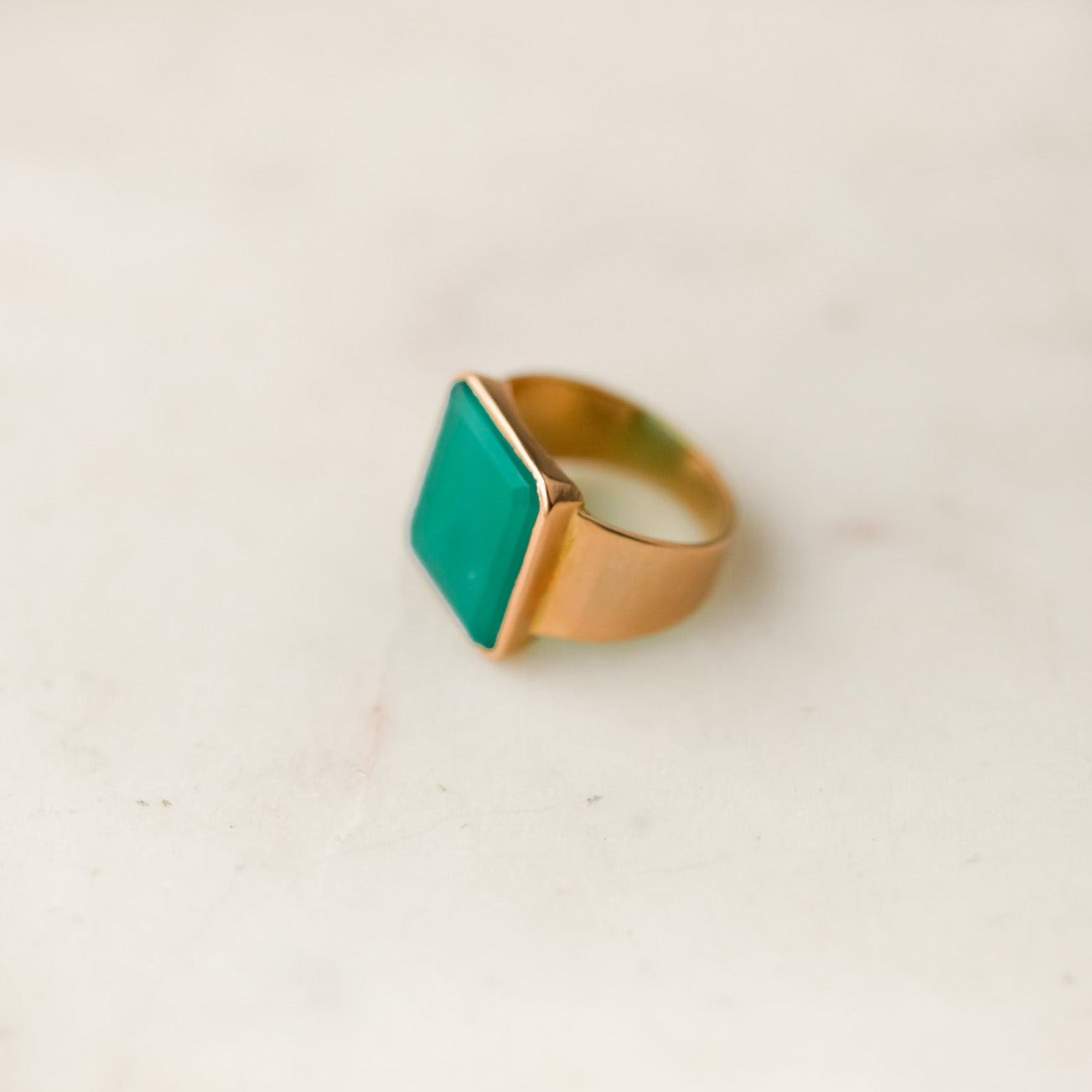

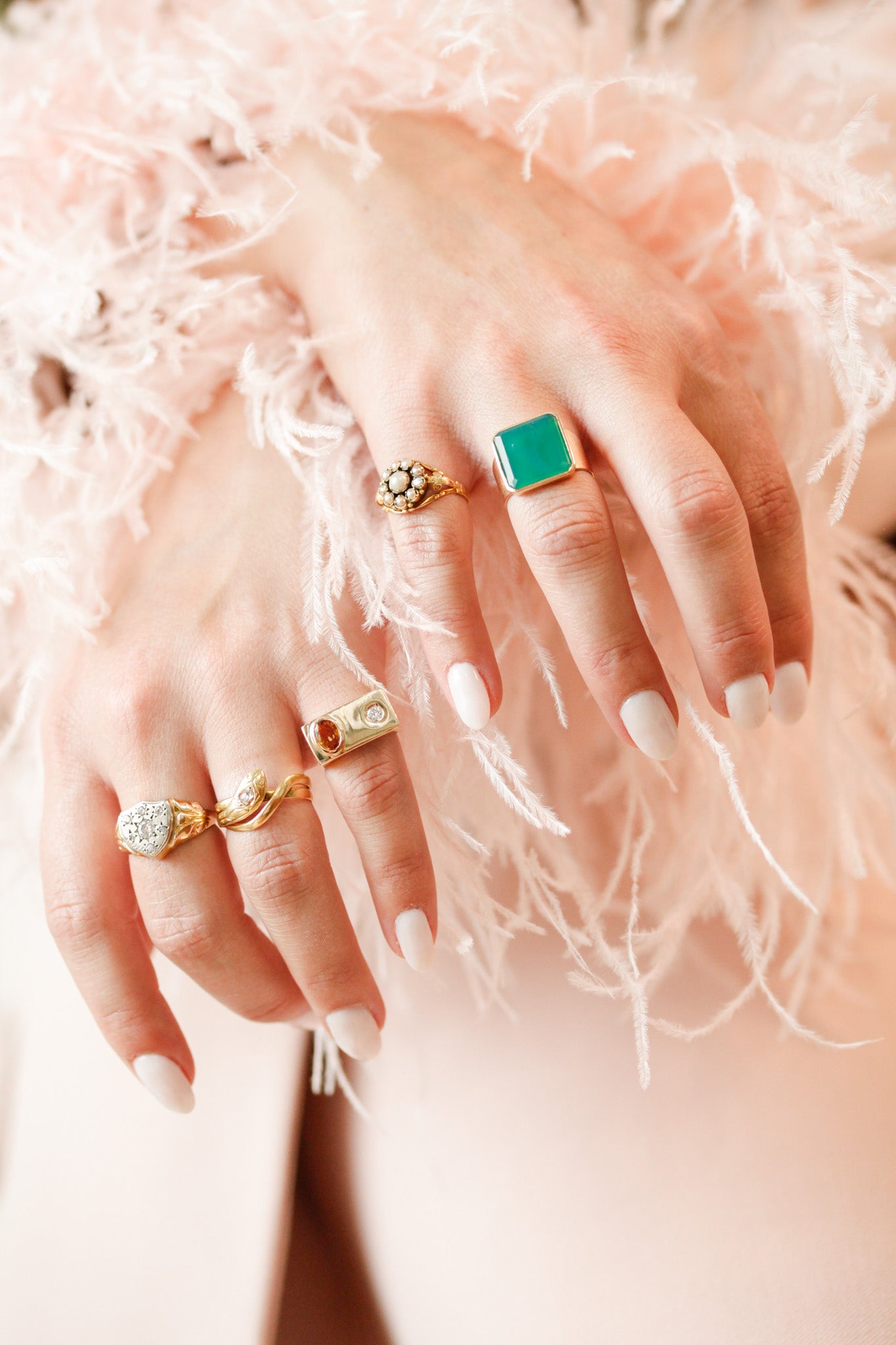
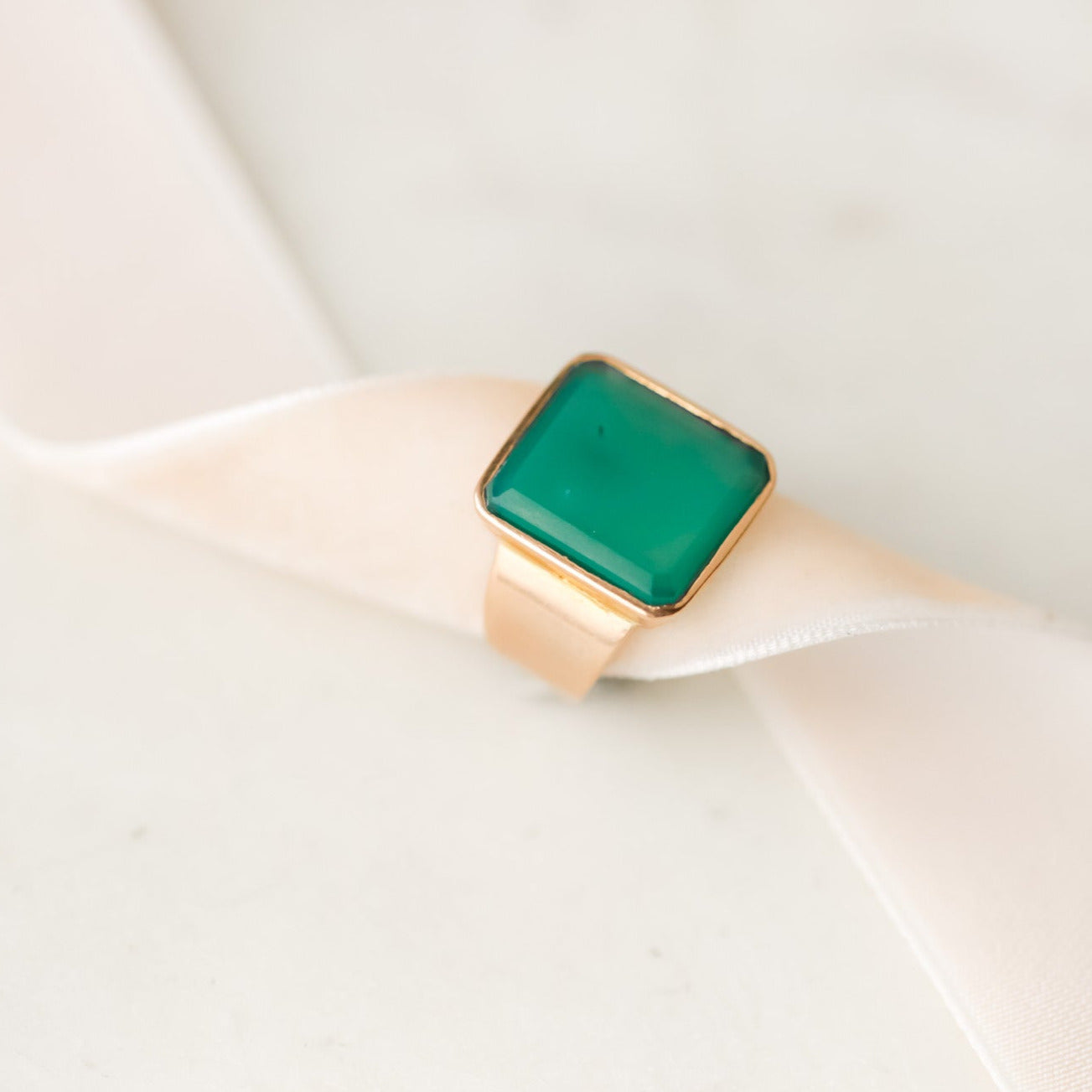
Cornwall Chrysoprase Signet
THE STORY:
Modern + chic, bold + classy. Never have we ever coveted a signet like this beauty! With a bold Chrysoprase stone set in 14k gold, we'll be dreaming of this ring for years to come.
Called the stone of Venus, is the rarest and most valuable rich apple-green gemstone in the chalcedony family and was often mistaken for emeralds by ancient jewelers. Unlike emeralds, which owe their color to the presence of chromium, the bright spring green of chrysoprase is a result of trace amounts of nickel.
Chrysoprase was used by the Greeks, Romans and Egyptians to make seals, signets, jewelry and other ornamental objects because of its vivid color. The modern word comes from the literal Greek translation "chrusos", meaning golden, and "prason", meaning leek, indicating the golden-leek green color of the stone.
Alexander III, an ancient Greek king of Macedonia, was one of the most successful, undefeated military commanders in Greek history. A strange story regarding a chrysoprase stone reputed to have been worn by Alexander is related by a Dominican friar named Albertus Magnus.
According to Magnus, Alexander always wore a girdle into battle that was embedded with a bright chrysoprase stone. On his return from a successful campaign in India, he laid aside his girdle to bathe in the Euphrates River. While the girdle lay unattended, a serpent came and bit off the stone and dropped it into the water. Alexander III didn't win another campaign after loosing this precious talisman.
After the discovery of the tomb of Tutankhamen in the early 1920s, the well-known Art Nouveau period, which celebrated exotic sensuality and romanticism, came to life in prolific glory. Chrysoprase was used extensively during this Nouveau era with Egyptian revival jewelry that mimicked the vast treasures of the newly discovered pharaoh's tomb.
SHIPPING + FINANCING
SHIPPING
Free standard shipping on all orders over $200 within the United States via USPS. Orders ship within 1-3 days of order placement. Custom or altered orders ship within 7-10 days of placement.International orders ship in the same time frame using your choice of USPS First Class International or DHL.
Please visit our FAQ Page for more shipping, delivery, return, and other details.
FINANCING
If you wish to use Affirm as you payment option, simply add your item(s) to your cart and select Affirm at checkout.For all questions concerning Affirm's per-qualification, soft credit check, and interest, visit our Financing with Affirm Guide.
RETURNS + EXCHANGES
Please Click Here to review our Return and Refund Policy
Choose options









